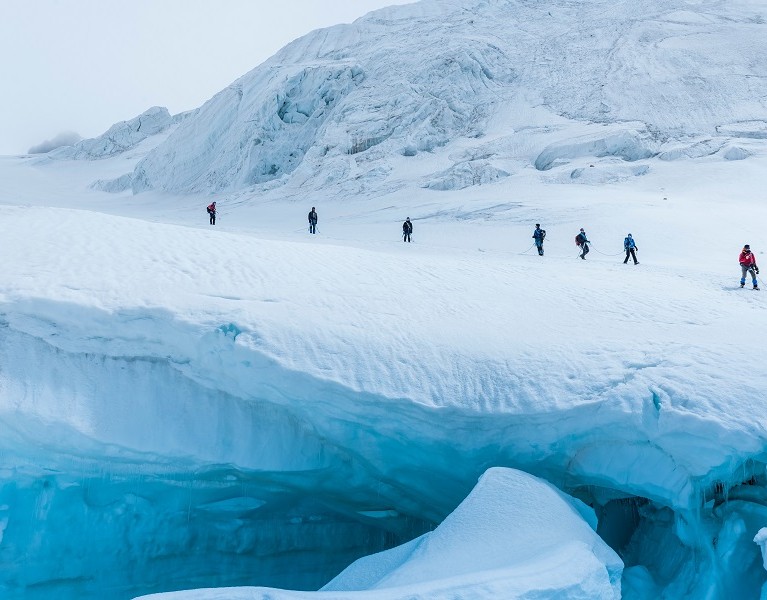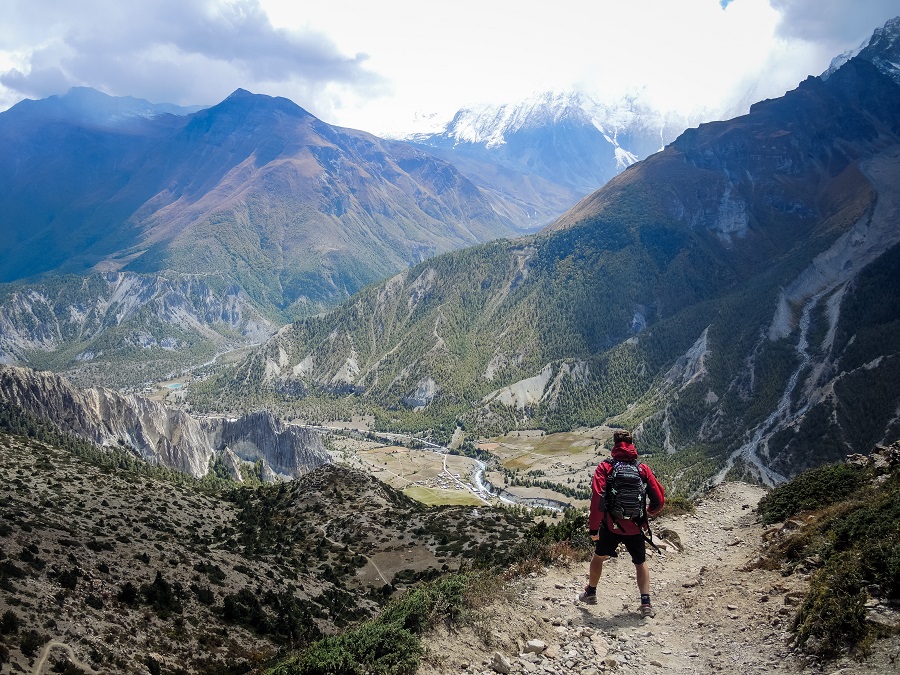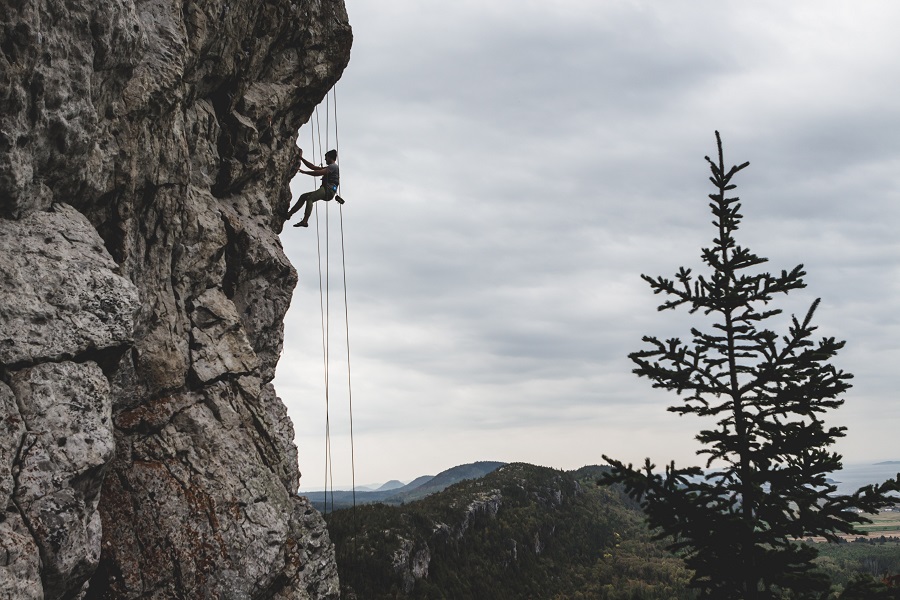
Hiking, Trekking, Mountaineering, and Backpacking: What's the difference?
Table of Contents [Show]
Are you intimidated by outdoor adventure terminology, even though you've been hitting the trails since pack frames resembled modern-day crossbar roof racks? You're not alone. Many terms are interchangeable; others are not. Nobody's going to kick you out of camp for confusing hiking, trekking, backpacking, and mountaineering, but you might feel a little less of a noob with a few basics in your vocabulary.
First, let's take a look at common uses (and misuses) of these terms:
- It was quite a trek from the airport terminal to long-term parking.
- Last year, I hiked the entire Pacific Crest Trail in 162 days.
- I finally talked my husband into taking a weekend backpacking trip!
- My daughter is now a mountaineer, having summited Kilimanjaro! What did your kid do the summer before first grade?
Don't worry, I'm not going to ask you which statements are blasphemy in the Church of Backcountry. But you can see how certain words are used for, well, increased drama. Others are simply proof that folks don't understand the technical levels and commitments involved with certain trail activities.
Hiking
Any time you leave paved earth and manicured lawns to walk about in nature for a half-hour or so, you can safely say you're hiking. Generally, hiking refers to single-day trips over any walkable terrain. Think of the act of hiking as the waffle-booted equivalent to off-road driving. Multi-day hikes, though, aren't on the same footing (pun intended) as, say, the Baja 1000. Most people think of hiking trips as leisurely, with the only deadlines being that work project due Monday morning. Which you're going to blow off, aren't you?
Another thing to note: If you're going out for a short, easy hike, you probably don't need to invest in ankle-supporting hiking boots or dedicated hiking clothing or equipment. Always be prepared for the unexpected, though; even two-hour trips can turn into multi-day search and rescue scenarios, so bring layers for temperature regulation, enough water, snacks to power you through a whole extra day, and a lightweight first aid kit. In other words, every hike should be a backpacking adventure!
Backpacking
As I hinted just a second ago, any time you need to carry your equipment for an overnight stay, you're backpacking. These days, with advanced materials and engineering, a well-made day pack can serve as a carrier for multi-day trips, and the contents of a small waist pack can keep you warm, safe, and dry for a Spartan night under the stars—intended or not. As with hiking, backpacking is a general term. More so, since we also apply it to budget travel. Backpacking through Europe, for example, when we call dibs for hostel bunks rather than chase scorpions away from The Perfect Tent Site.
Thru-hiking and section-hiking
Here's a testament to how hiking isn't limited to that weedy trail between your office complex and the local junk food franchise. A thru-hike is a multi-month, typically one-way trip along one of many long-distance trails, such as the Pacific Crest, Appalachian, or Continental Divide. Hikers with smaller budgets and less free time may tackle these epic trails in large chunks; these are called section-hikes.
But we have writer Bill Bryson to thank for confusing the matter even further. He named the book in which he recounts his valiant attempt at thru- and then section-hiking the Appalachian Trail A Walk in the Woods, and neither the AT nor Bryson's particular experience on the trail resembles anything close to what the title evokes.
And yes, that's how Bryson intended it.

Trekking
Trekking is any long multi-day tromp, but more specifically, it's is a combination of adventure travel and long-distance hiking. A trek may cover a single geographic region, or span the entire globe. For the most accurate definition of trekking, let's turn to the classics, shall we?
Space, the final frontier: Well, if you want to get metaphysical about it, knock yourself out. Just don't freefall off that narrow ledge, okay?
These are the voyages of the Starship Enterprise: Whatever trail name suits you, buddy...
It's a five-year mission: Yep, some earthly treks can go as long, if not longer. For some, trekking is a lifelong endeavor, and itineraries aren't necessarily linear. You can linger in an area as long as you'd like, hitch a ride or a flight to another jumping-off point, and alter your path anytime inspiration (or local advice) suits you.
To explore strange new worlds: Ok, strange new continents and stuff. We haven't seen any Outside articles on Martian trekking adventures. Yet.
To seek out new life: Remember when I mentioned scorpions?
And new civilizations: This is a defining factor in trekking. Where thru-hikers build a culture of their own among the season's "class," trekkers often plan their journey around towns, cities, and settlements with a priority on experiencing the local culture. Many trekkers consider the time on the trail as a means to that end.
To boldly go where no man (*ahem* person) has gone before: In most cases, trekking involves established trails and roads. In some regions, such as Nepal, these have been in use for millennia. But if you do explore the wilds, it's usually best to bring an experienced guide with you. You know, someone who's... gone there before.
The American Hiking Society is a great place to learn about local hiking groups, conservation efforts, and day trip and trek planning. From there, you'll find your way to resources specific to the long-distance trail or trekking region you're most interested in conquering.

Mountaineering
This is the easiest term to pin down, as mountaineering generally requires technical climbing and self-rescue skills as well as specialized equipment. Kilimanjaro is, indeed, a mountain but it doesn't require ropes, ice axes, or crampons. It's considered technically easy compared to the other Seven Summits—the highest peaks on each of the seven continents. With the proper coaxing and a good supply of juice boxes, a child can indeed reach the top of Kilimanjaro or Australia's Mount Kosciuszko, but one does not simply walk to the peak of Denali. The latter is reserved for true mountaineers, as are overland trails that require occasional roping-in.
Learn more about climbing and mountaineering at the International Climbing and Mountaineering Foundation website.
How (and where) you hike affects your gear selection
Understanding the terminology may help you fit in at your local Sierra Club meetings, but it's most important when you're planning your next adventure. Your footwear, clothing systemand camping equipment choices require proper research, and I recommend searching for adventurers who've blogged about their experiences. They'll often include in-the-field equipment reviews, even if it's just a 2000-word rant about a trail shoe falling apart after 22 miles or the amazing ease with which they were able to master a tarp tent.
Hiking and mountaineering boots are two separate creatures, and many thru-hikers prefer lightweight road-running shoes to traditional trail footwear. Trekkers and backpackers may opt for wrinkle-free, wash-and-wear adventure travel clothing that helps them look presentable in town, while mountaineers and thru-hikers focus on function rather than form.
You can learn more about your adventure travel and sport clothing options at KÜHL, and read some fantastic trip reports and destination recommendations on the Born in the Mountains blog.
So now, you've mastered some of the more confusing terms for trail travel, but it's just a start. To become fluent, you've got to get out there and join the tribe. Are you ready?
Featured image - Snow hiking in Italy. Photo by asoggetti.


